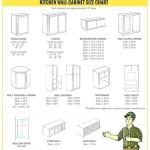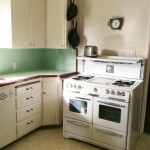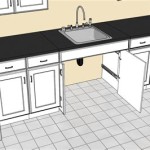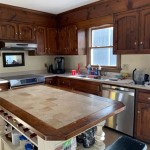Kitchen Cabinet Door Panel Thickness: Essential Aspects to Consider
NOUN
Kitchen cabinet door panel thickness is a crucial aspect that can significantly impact the overall design, durability, and functionality of your cabinetry. Understanding the key considerations associated with panel thickness is essential for making informed decisions that enhance the aesthetic appeal and longevity of your kitchen. ### Durability and Strength The thickness of cabinet door panels directly affects their durability and ability to withstand daily use. Thicker panels resist warping, sagging, and denting better than thinner ones. For areas subjected to heavy use, such as around sinks or cooktops, thicker panels are highly recommended. ### Aesthetic Appeal Panel thickness also plays a significant role in the visual appeal of your kitchen cabinets. Thin panels create a sleek, modern look, while thicker panels convey a more traditional or rustic style. Choosing a thickness that complements the overall design scheme of your kitchen is essential for achieving a cohesive and visually pleasing space. ### Functionality and Hardware The thickness of cabinet door panels can impact the functionality of your hardware. Thinner panels may not provide sufficient support for certain types of hinges or handles, while thicker panels offer more stability and allow for a wider range of hardware options. ### Types of Panel Materials The material used for cabinet door panels also influences the optimal thickness. Laminate panels, for example, are typically thinner than solid wood panels, as they consist of a thin layer of laminate bonded to a substrate. Real wood panels, on the other hand, can vary in thickness depending on the species and construction method. ### Thickness Standards and Variations Standard cabinet door panel thicknesses range from 1/2 inch to 3/4 inch. However, some manufacturers may offer thicker options for added durability or specific design requirements. It is important to note that thickness variations within a single door or between different doors can occur due to temperature and humidity fluctuations. ### Maintenance and Care Thicker cabinet door panels generally require less maintenance and care compared to thinner ones. They are less susceptible to scratches, dents, and other forms of damage, making them easier to maintain over the long term. ### Conclusion Kitchen cabinet door panel thickness is a crucial design consideration that influences durability, aesthetic appeal, functionality, and maintenance requirements. By understanding the essential aspects outlined above, you can make informed decisions that enhance the quality, longevity, and overall satisfaction derived from your kitchen cabinetry.
How To Build Cabinet Doors Sawdust Girl

Selecting Cabinet Doors For A New Kitchen Craig Allen Designs

Cabinet Composition What Makes A High Quality

Aluminium Kitchen Shower 5g Classic Euro Cabinet Door Panel Profile Thickness 0 70mm My1409 C Aluclass Lazada

Kitchen Cabinet Doors 101 Christopher Scott Cabinetry
Panels As Door And Materials Explained

Kitchen Cabinet Door Styles A Buyers Guide Ottawa On Types Materials Installation Design Panels Slab Flat Shaker Raised Glass Cathedral Custom Semi Prefab Melamine Polyester Solid Wood Medium Density Fibreboard

Size Of Rails And Stiles A Shaker Cabinet Ehow

Making Raised Panel Doors On A Tablesaw Fine Homebuilding

Cabinet Door Types Styles Cliqstudios
Related Posts








